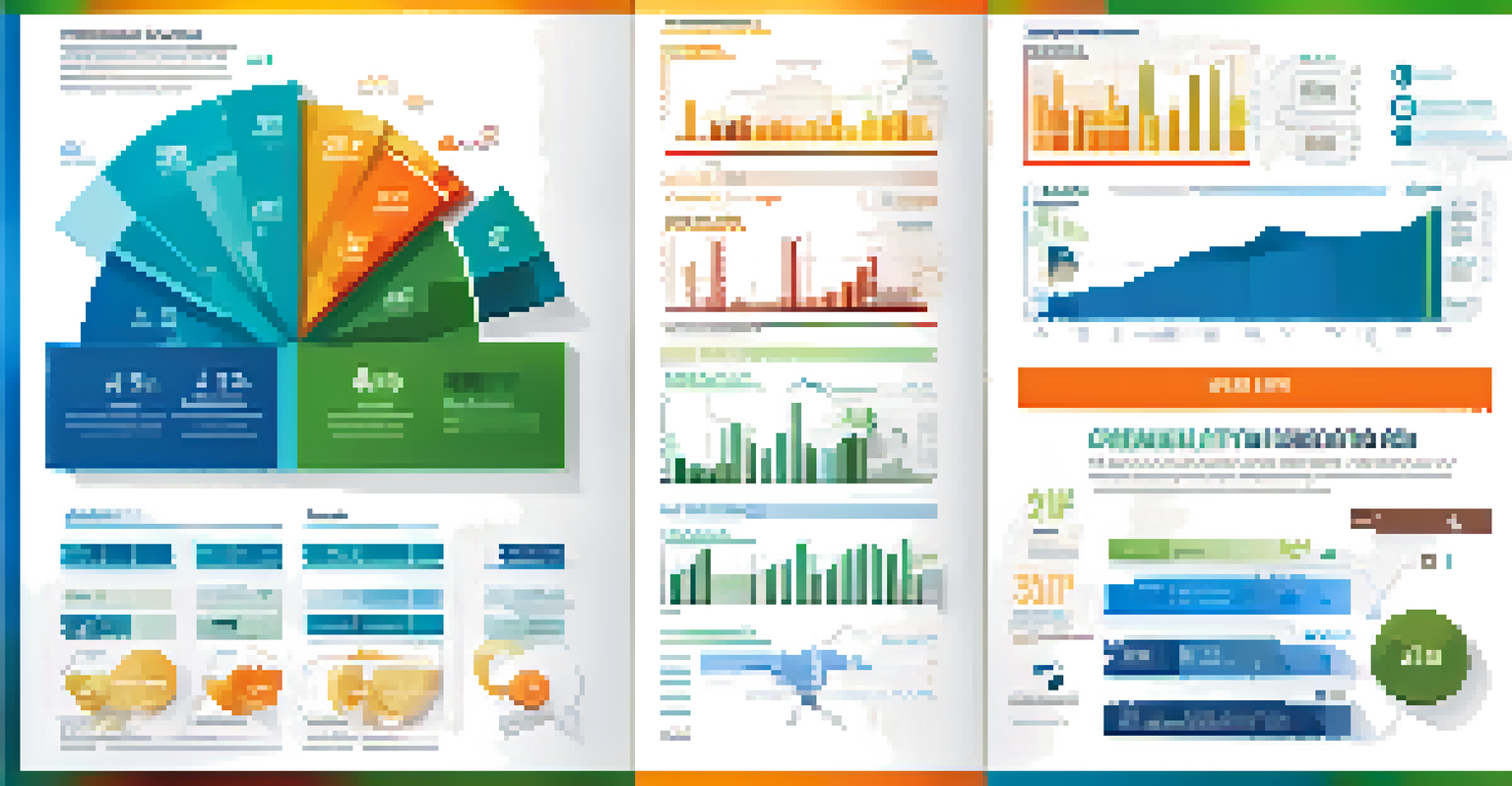How to Use Financial Ratios to Assess Your Business Health

Understanding Financial Ratios and Their Importance
Financial ratios are essential tools that provide insights into your business's financial health. They allow you to analyze various aspects like profitability, liquidity, and efficiency. By comparing these ratios over time or against industry benchmarks, you can identify trends and areas for improvement.
In business, what’s dangerous is not to evolve.
Think of financial ratios as the vital signs of your business, much like a doctor uses heart rate and blood pressure to assess health. Each ratio tells a different story, highlighting strengths and weaknesses that may not be immediately obvious from financial statements alone. Understanding these nuances can empower you to make informed decisions.
Ultimately, mastering financial ratios can help ensure your business is not just surviving, but thriving in a competitive landscape. The insights gained from these ratios can guide strategic planning and operational adjustments, leading to long-term success.
Key Financial Ratios Every Business Owner Should Know
There are several crucial financial ratios that every business owner should be familiar with. Some of the most important include the Current Ratio, Debt-to-Equity Ratio, and Return on Equity (ROE). Each of these ratios provides different insights into your business's financial structure and performance.

For instance, the Current Ratio measures your ability to cover short-term liabilities with short-term assets. A ratio above 1 indicates good liquidity, while a lower ratio could signal potential cash flow issues. Similarly, the Debt-to-Equity Ratio helps you understand your business's leverage and financial risk.
Financial Ratios Reveal Business Health
Financial ratios serve as vital indicators of your business's financial health, helping you identify strengths, weaknesses, and areas for improvement.
By regularly monitoring these key ratios, you can stay on top of your business's financial health and make adjustments as needed. This proactive approach can prevent financial distress and help you seize growth opportunities.
How to Calculate Key Financial Ratios
Calculating financial ratios is straightforward once you know the formulas. For example, the Current Ratio is calculated by dividing current assets by current liabilities. This simple equation can unveil a lot about your business's liquidity.
The goal is to turn data into information, and information into insight.
Similarly, to find the Debt-to-Equity Ratio, you divide total liabilities by shareholders' equity. This provides insight into how much debt your business is using to finance its operations compared to equity. These calculations can be done using data from your balance sheet and income statement.
Don't be intimidated by the math; remember that these calculations are just tools to help you understand your business better. Once you've calculated these ratios, you can start analyzing what they mean for your company's financial health.
Interpreting Financial Ratios: What They Mean
Interpreting financial ratios is where the real insights come into play. Each ratio has its own benchmark or ideal range, which can vary by industry. Understanding these benchmarks allows you to assess where your business stands relative to competitors.
For instance, a Current Ratio of 1.5 might be considered healthy in one industry but concerning in another. It's essential to contextualize your ratios within your specific market to draw meaningful conclusions. This step can reveal whether you are on track or need to recalibrate your strategies.
Key Ratios for Business Assessment
Understanding and calculating key financial ratios like Current Ratio and Debt-to-Equity Ratio is crucial for assessing your business's liquidity and risk.
Additionally, you should look for trends over time rather than focusing solely on one-off figures. If your Current Ratio is declining consistently, that could indicate an emerging liquidity problem. By staying vigilant and interpreting your ratios effectively, you can navigate your business toward stability and growth.
Using Ratios to Identify Financial Strengths and Weaknesses
Financial ratios serve as a mirror reflecting your business's strengths and weaknesses. For example, a high Return on Assets (ROA) indicates efficient management of assets, while a low ratio could pinpoint areas needing improvement. This insight allows you to allocate resources where they're most needed.
Moreover, ratios like the Gross Profit Margin can highlight operational efficiency. If this ratio is declining, it may signal rising production costs or pricing issues. By identifying these weaknesses early, you can take corrective actions before they escalate into significant problems.
Conversely, identifying strengths, such as a high Debt-to-Equity Ratio, can boost your confidence in pursuing growth opportunities. Understanding where your business excels can empower you to leverage those strengths for competitive advantage.
Limitations of Financial Ratios: What to Watch For
While financial ratios are invaluable, they do come with limitations that you should be aware of. For starters, ratios are often based on historical data, which may not accurately reflect current or future conditions. Economic shifts, market disruptions, and internal changes can all impact their relevance.
Additionally, financial ratios typically do not provide a complete picture of your business's health. They should be used in conjunction with other financial metrics and qualitative factors, such as customer satisfaction and employee engagement. A holistic approach will give you a better understanding of your business.
Use Ratios for Strategic Decisions
Interpreting financial ratios in the context of industry benchmarks and trends can guide strategic planning and operational adjustments for long-term success.
It's also important to ensure that you're using consistent accounting practices when calculating ratios. Changes in how you report financial data can lead to skewed results. By acknowledging these limitations, you can use financial ratios more effectively and make well-rounded decisions.
Practical Steps to Implement Financial Ratio Analysis
Implementing financial ratio analysis into your business routine can be straightforward. Start by gathering your financial statements, such as the balance sheet and income statement. Make it a habit to calculate key ratios regularly, whether monthly, quarterly, or annually.
Next, set benchmarks based on industry standards or your historical performance. This practice will help you identify trends and necessary adjustments. You might consider creating a dashboard that visualizes these ratios, making it easier to track changes over time.

Finally, don’t forget to involve your team in this process. Educating your staff about financial ratios can foster a culture of financial awareness and responsibility. When everyone understands the business's financial health, you can work together toward common goals.